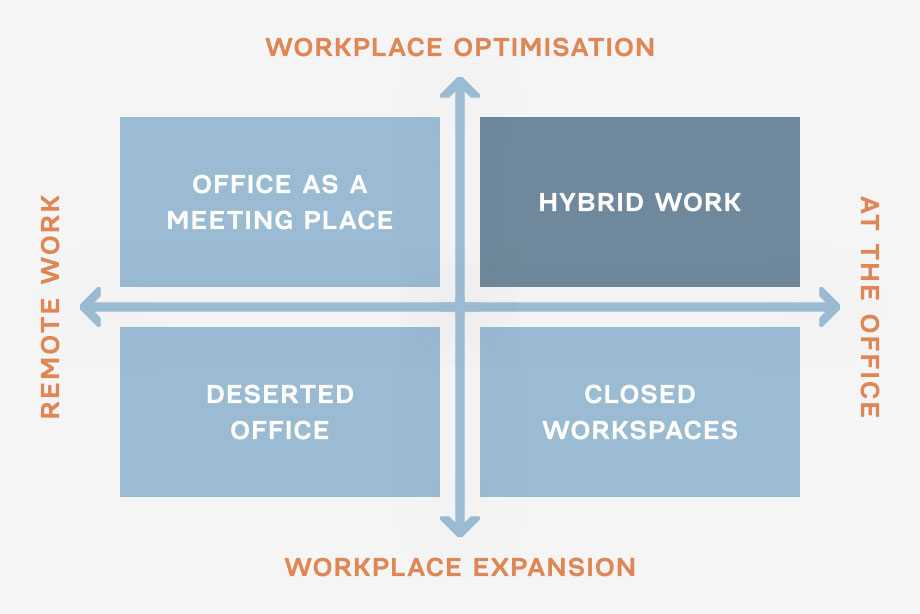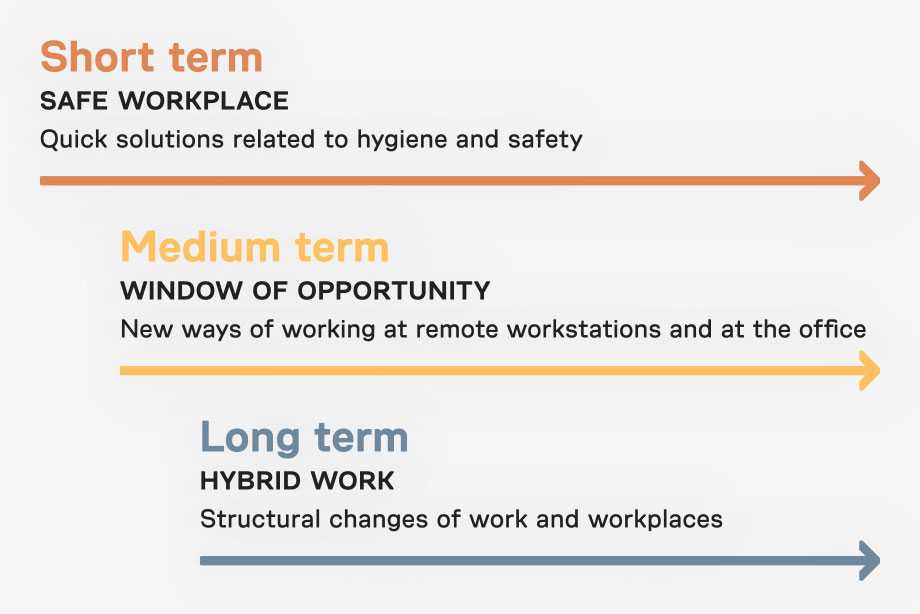Many companies are now thinking of ways to enable their employees to safely return to the workplace. How will people work from now on, and what kind of premises are required for safe work?
Martela has conducted its own analysis of what factors will need to be taken into account at workplaces when the current extensive period of teleworking comes to an end.
“People have been working from home for months now, and many people are longing to get back to effortless collaboration and informal meetings at the office. The value of modern work is in collaboration and meetings, and even if working from home is ideal for work which requires concentration, people are suffering from not being able to work together,” says Eeva Terävä, Head of Workplace Development at Martela.
According to a survey conducted by Eurofound, more than one third of the respondents working in the EU countries had started to work from home due to the pandemic. Remote working was most common in the Nordic and Benelux countries. In Finland, for example, almost 60 per cent of employees were working from home. In Denmark, the Netherlands and Belgium the figure was higher than 50 per cent, and more than 40 per cent in Sweden.
After this move over to remote working society will gradually be opened up again. Many companies are now wondering whether they will need more space when their employees return to the office. Should employees get their own rooms again, or should we go back to the open-plan offices that were popular in recent decades where employees were separated by screens?
“It is not a good idea to make rash decisions in a crisis and reverse the progress achieved. The coronavirus pandemic is accelerating the process of changing the way we work where the office is just one of the many places where we work, and for some of us the amount of remote working we do will increase for good. Offices must be able to offer spaces suited for various tasks, and this period of remote working has shown that we really do need places suited for collaboration,” Terävä says.

The future is a hybrid: don’t go back in time
Martela predicts that future working life will be built on hybrid work. What this means is that organisations will be able to continue to reduce unnecessary space and focus on providing their employees with exactly the kind of workspaces they need – both at home and at the office.
“During the crisis, the home has been a temporary office, and the role of the home as a workspace has increased dramatically. Many companies have even assisted their employees in acquiring ergonomic workstations at home. Over the long term, investing in ergonomics at the home office will pay off through increased efficiency and meaningfulness of work and a reduction in sick leave absences resulting from problems with ergonomics,” Terävä says.
Martela has modelled the transition over three periods of time: the short term, medium term and long term. In the short term, Martela recommends protecting people against infection, for example, by increasing the distance between workstations. In the medium and long term, the pandemic will provide a window of opportunity to wholly rethink work arrangements.
For a growing number of people, the office will compete with the home as one of the places to do work.
"It does not make sense to squeeze workstations for every single employee into the office, but rather use the space freed up to increase comfort and informal meetings between people. In our new world, special attention will need to be focused on planning the workplace to make working there meaningful and efficient,” Terävä says.
In situations that are difficult to anticipate the workspace needs of a company can change rapidly. There is no need to tie up capital in furniture. Instead, an office can be furnished using a flexible service model based on monthly charges. Office utilisation can be monitored with sensors which show which spaces are used the most and which spaces are not used at all.
“Measuring the utilisation rate reveals how employees use the office space and what should be changed. When this measurement is combined with a flexible service model it enables agile optimisation of the office. The sensors also help employees choose a workstation which has not been used in a while. In other words, this is also an occupational safety issue, as it helps reduce virus transmission via surfaces,” Terävä says.

Office separates work and free time
Martela has conducted a public survey to find out what people think about teleworking and the conditions under which this has been done.
People find it easy to concentrate at home, but cooperation is more difficult. There are also shortcomings in work ergonomics.
Offices are needed, however, to help people separate their work from their free time again. One in four of the respondents do not take any breaks at all and complete the entire day in one sitting.
“The home is a home and cannot function as a temporary workplace forever. The change has clearly uncovered the good sides of working together, and many people are already eager to get back to the office,” Terävä concludes.
Further information:
Eeva Terävä, Head of Workplace Development, Martela Corporation
eeva.terava@martela.com
+358 10 3455 178